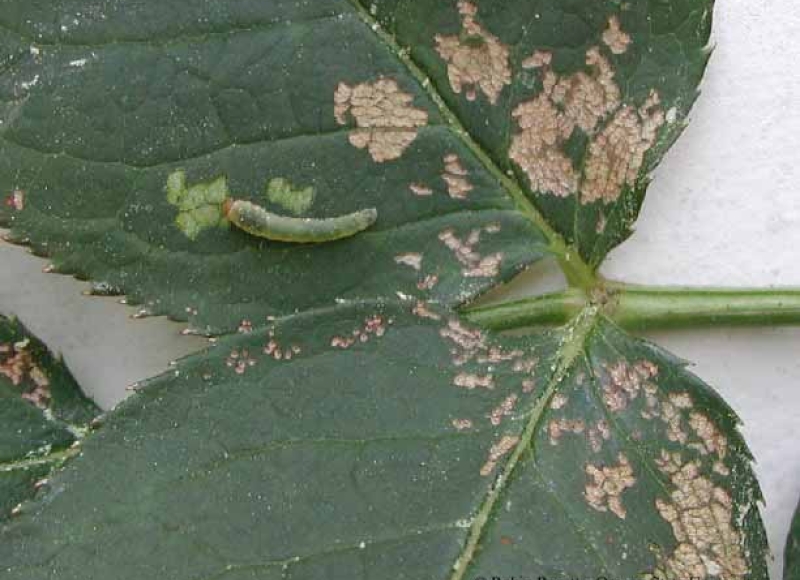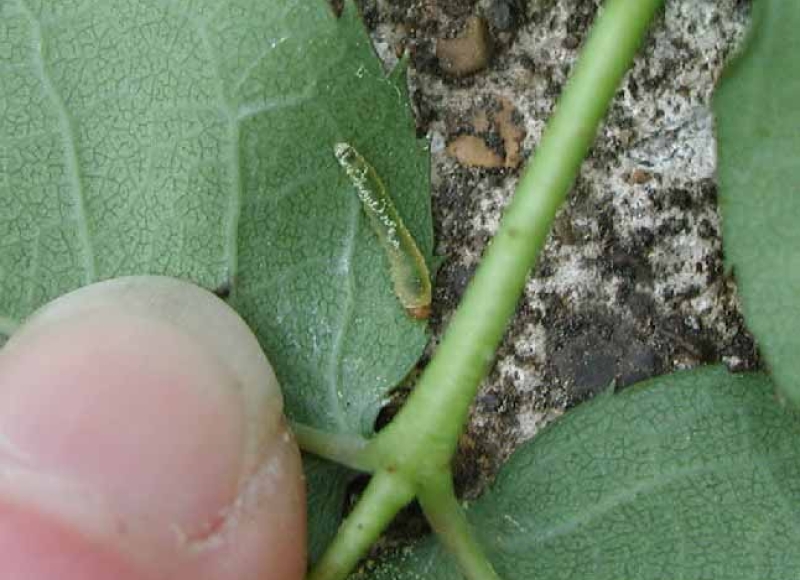There are several sawfly species that feed on roses. The common roseslug, Endelomyia aethiops, can be found skeletonizing rose leaves in late spring and early summer. This species, along with the bristly roseslug, Cladius difformis, belong to the family Tenthredinidae. The larvae look similar to caterpillars but are actually more closely related to bees and wasps. The common roseslug is pale green with a light tan head capsule. The bristly roseslug has many hairlike bristles. Along with three pairs of true legs, they have three pairs of abdominal legs which lack the hooked crochets on the prolegs of true caterpillars. The adult sawflies are small, thick-waisted wasps, mostly black in color.
Damage
Initial feeding damage is usually found in May or June in the PNW and consists of tiny areas of clear tissue. With time, the roseslug feeding creates a distinctive windowpanelike damage. The larvae feed on the underside of the leaves.
Management
Cultural control includes hand picking and disposing of infested leaves. There are a range of chemical control options including biorationals such as insecticidal soaps and horticultural oils. Direct contact is necessary. Products such as Conserve or Entrust (OMRI or organic formulation) with spinosad have good activity on sawflies (bee warning). For landscape applications (no nursery label), Acelepryn has give activity and less risk to pollinators. Although they look like caterpillars, they are not affected by Bt sprays as are the larvae of moths and butterflies. Pay attention to bee safety when affected roses are in flower.
Links:
Sacramento Rose Society: Rose sawflies. There are great images and information on the different types of rose sawflies found in Northern California and Oregon.
UC Irvine, Bristly roseslug, Cladius difformis. Wonderful images of bristly roseslug sawflies, particularly adults at this website.
Images of the adult roseslug can be found at the Biodiversity Database of Washington DC website.
Orginal publication: 6/3/2009
Latest publication: 5/6/2016
Author: R.L. Rosetta, Extension Nursery Integrated Pest Management, Department of Horticulture, Oregon State University









